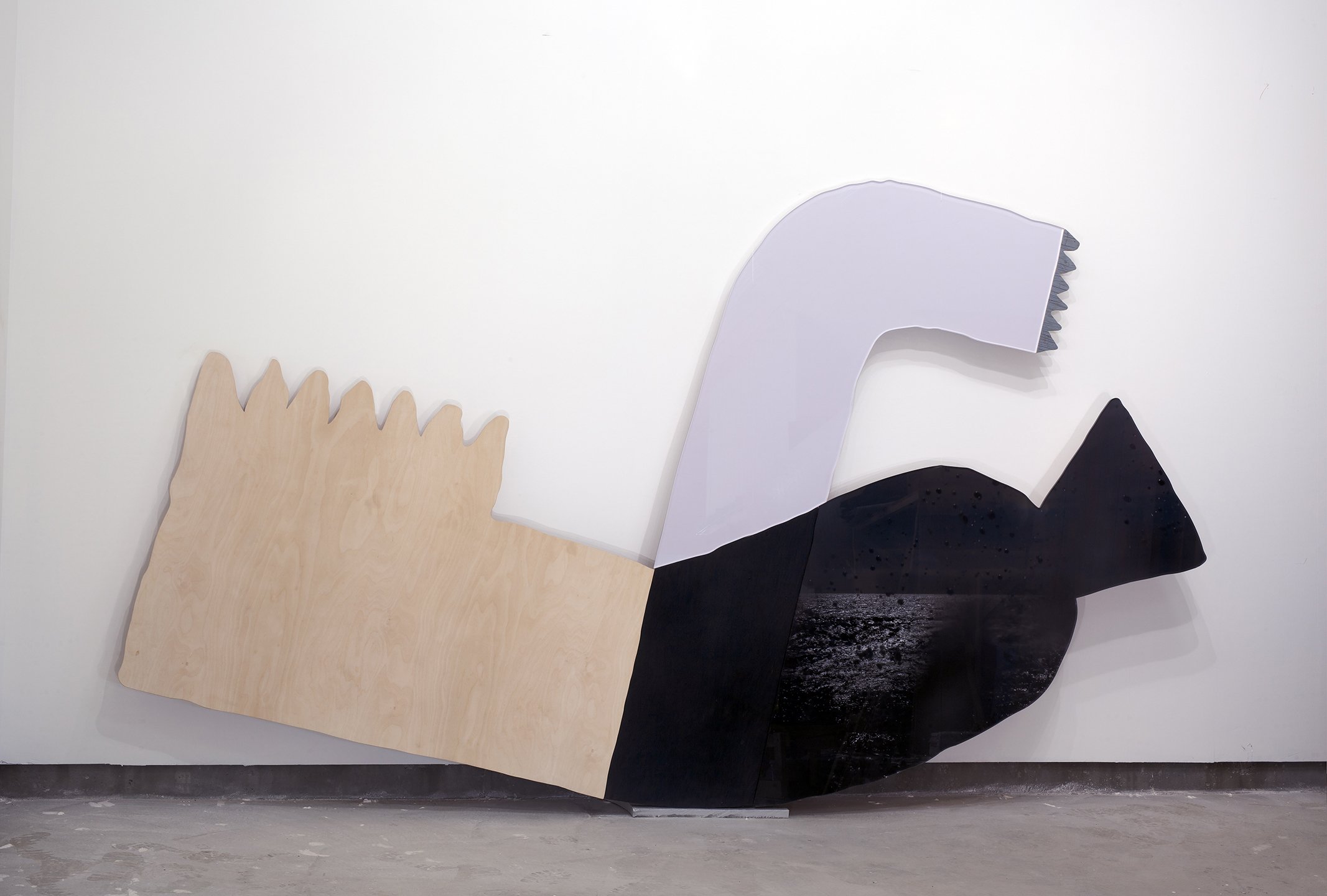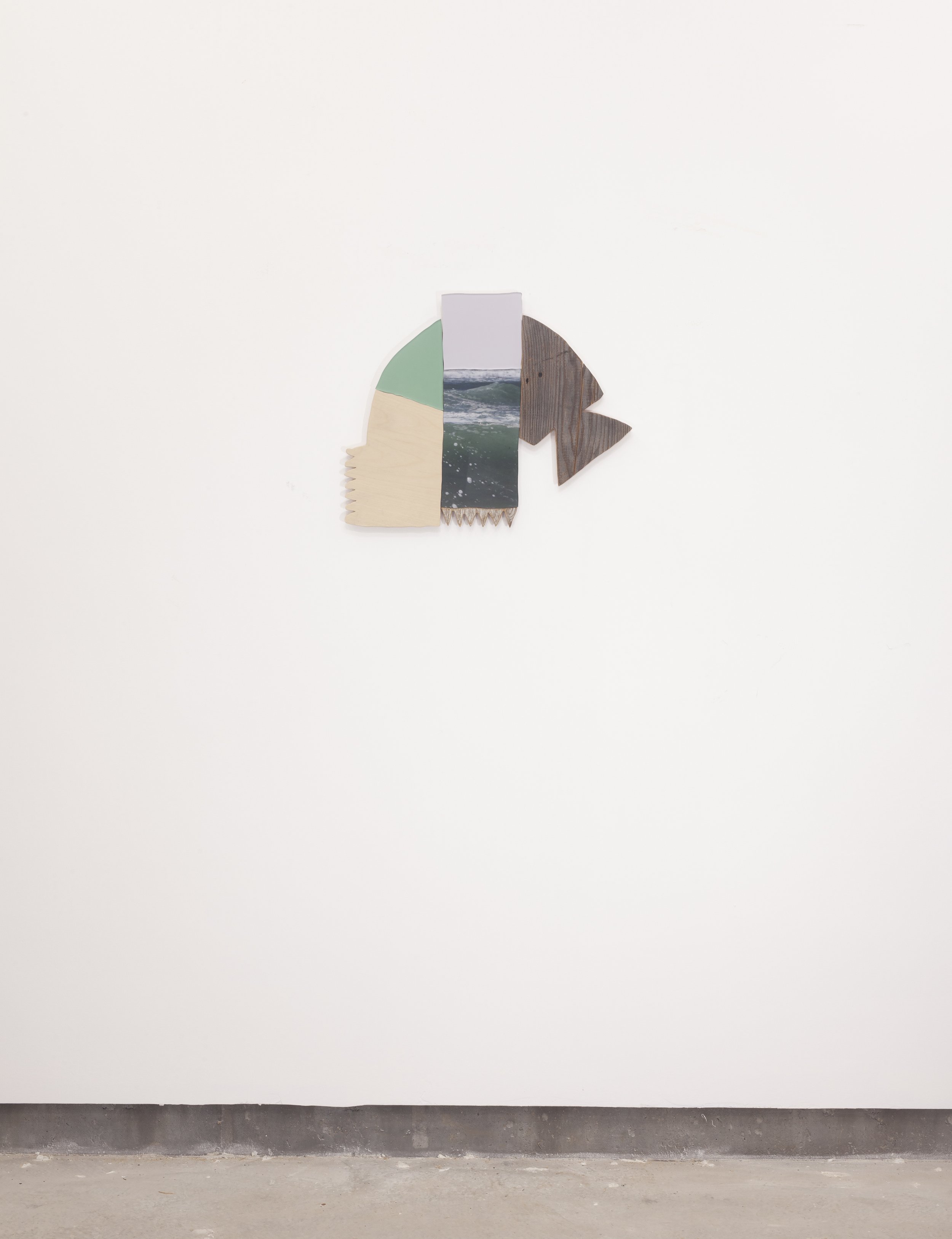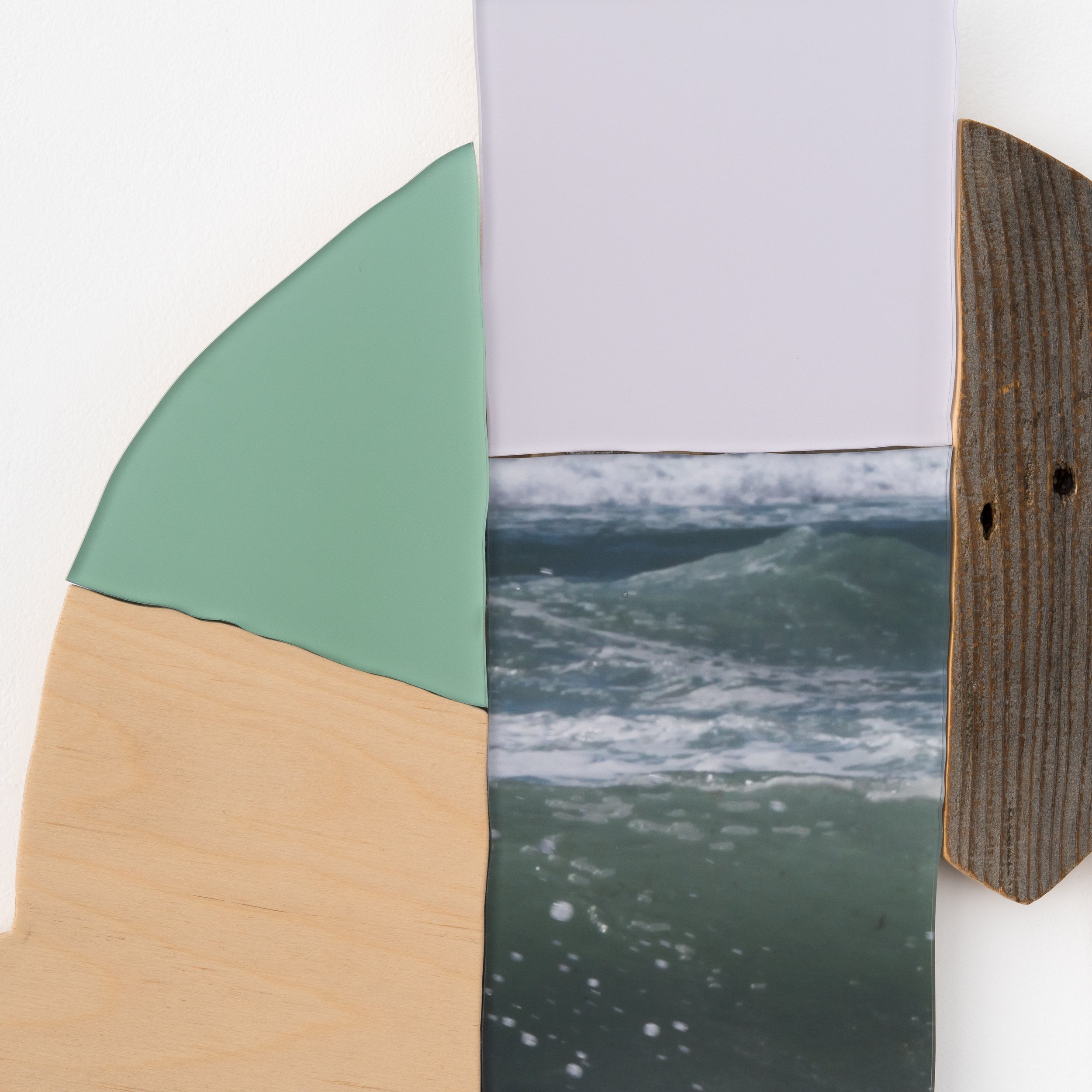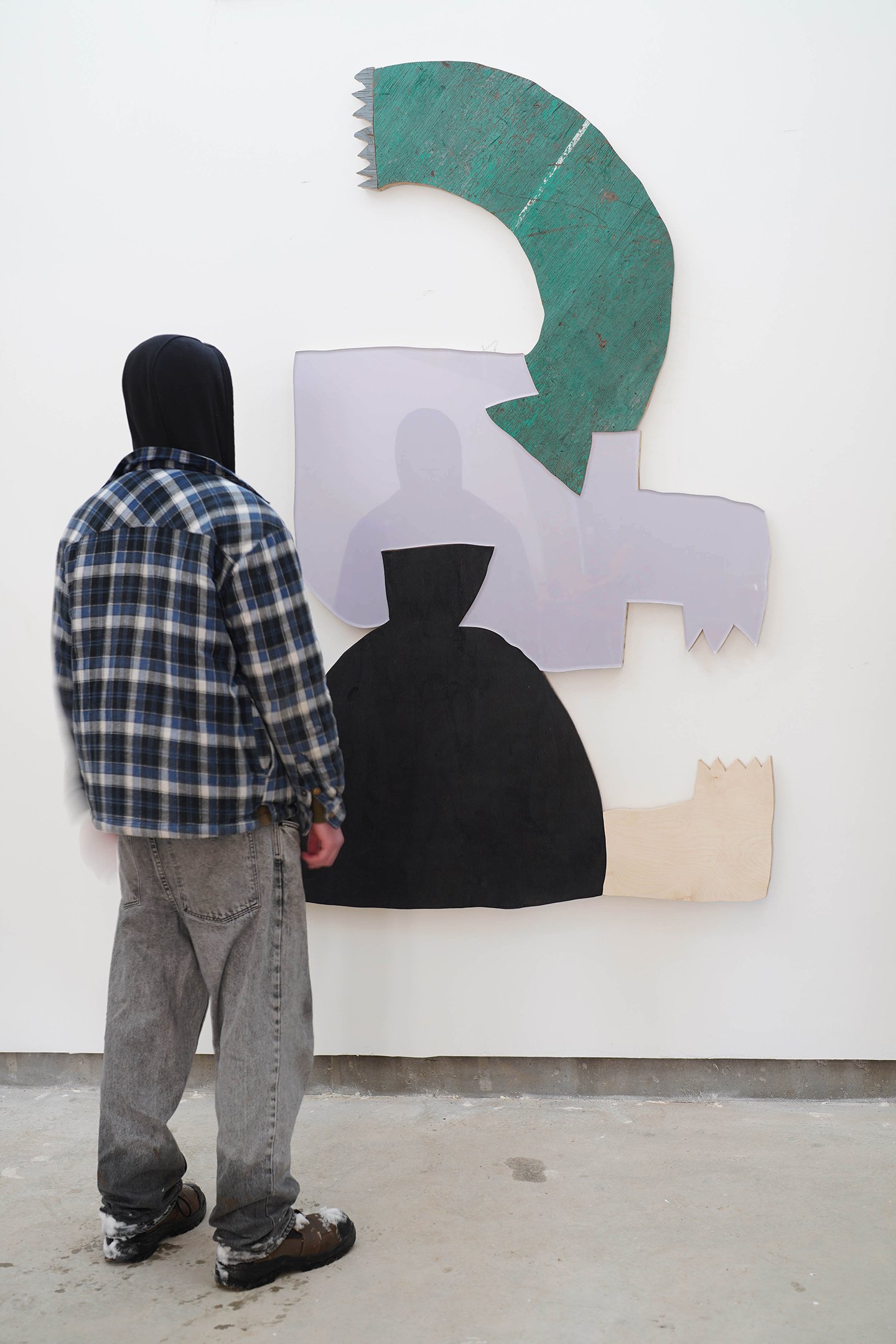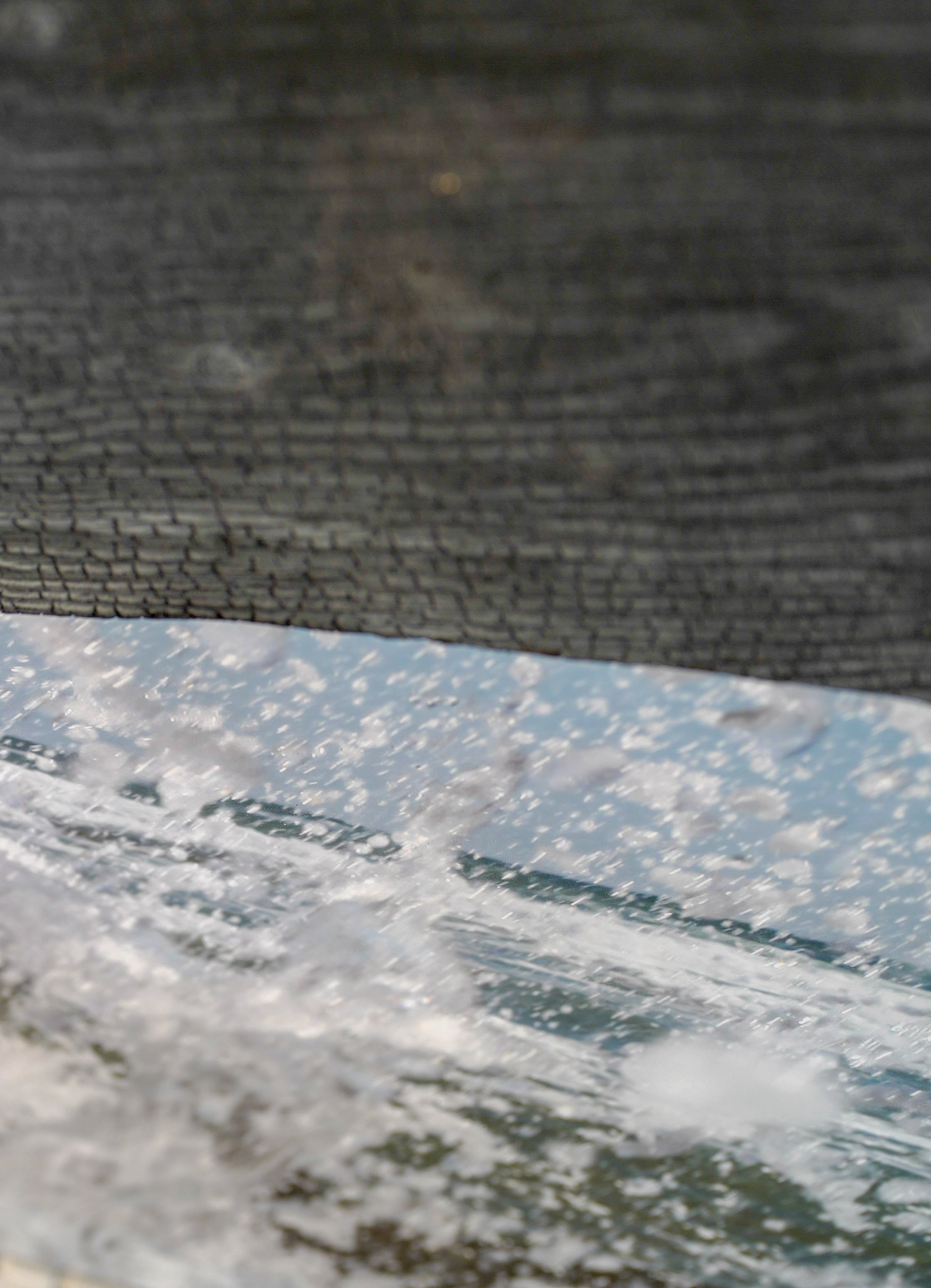J’aurai cherché partout.
- Maéli Leblanc-Carreau
Les bouleversements que nous expérimentons au quotidien de manière individuelle et collective nous incitent à redéfinir continuellement nos schèmes de pensée. Dans cette perspective, Möe Piuze s’est construit par l’entremise d’une technique d’autohypnose – capacité autosuggérée de modification de conscience entre l’éveil et le sommeil permettant d’accéder aux ressources inconscientes de l’esprit – un atelier idéal dans lequel il lui est possible de restructurer ses anxiétés, ses idées et autres aspects de son existence. C’est donc dans cet état au seuil de la réalité et de l’imaginaire que Piuze a d’abord dessiné la série de personnages-paysages-ateliers qui composent l’exposition J’aurai cherché partout.
Ces esquisses sont ensuite agrandies et reproduites, en conservant la spontanéité du trait de départ, au moyen d’une juxtaposition intuitive de larges champs colorés, de photographies de paysages ainsi que de divers matériaux parfois neufs ou récupérés dans son atelier (réel), tels que du bois et du plexiglas. Alors que les photographies de vagues et de l’océan reflètent un espace ouvert et mémoriel possédant plusieurs lignes de fuite, la planéité et les textures brutes du bois créent un contraste et ramènent le regard au premier plan favorisant ainsi les narrations multiples.
En résultent des œuvres à la fois picturales et sculpturales au vocabulaire visuel succinct – une main-scie, un pied nu, un carré, un rectangle, un triangle, une arche, un tenon et une mortaise. Ces formes géométriques, abstraites et anthropomorphiques incarnent la notion du corps-maison-paysage au centre de la démarche artistique de Piuze. Le corps, la maison et le paysage sont en effet des symboles récurrents dans son travail. Ils lui permettent de représenter son identité plurielle (fils, frère, père, partenaire, citoyen, artiste, etc.) évoluant au sein d’un enchevêtrement de conditions sociales en perpétuelle transformation.
Exposés dans les aires de circulation du Musée d’art de Joliette, ces êtres imposants – matérialisation du territoire inconscient de l’artiste – s’intègrent à l’architecture de l’établissement. Leur présence participe à leur façon au vivre-ensemble du lieu. Qu’il s’agisse du meilleur endroit où travailler, du meilleur dessin ou du meilleur matériau, J’aurai cherché partout suggère la nécessité pour Piuze de se bricoler une vie, réelle comme imaginaire, habitable et bonne.
—
The disruptions we experience on a daily basis, both individually and collectively, prompt us to continually redefine our thought patterns. With that in mind, Möe Piuze has built the ideal studio where he can restructure his worries, ideas, and other aspects of his life through the technique of self-hypnosis—the ability to modify, at will, one’s state of consciousness between wakefulness and sleep to tap into the unconscious resources of the mind. It was while in this state, on the threshold of reality and the imaginary, that Piuze first drew this series of figure-landscape-studios that make up the exhibition J’aurai cherché partout [I Would Have Searched Everywhere].
Piuze then enlarged and reproduced his drawings, preserving the spontaneity of the original line, in an intuitive juxtaposition of large colour fields, landscape photographs, and various new or salvaged materials from his (real) studio, such as wood and plexiglass. Photographs of waves and the ocean reflect open, memorable spaces with several vanishing points, while the wood’s flatness and raw textures create contrast and bring the gaze back to the foreground, creating multiple potential narratives.
The resulting series of pictorial and sculptural works have a succinct visual language—a hand-saw, a bare foot, a square, a rectangle, a triangle, an arch, a mortise and tenon joint. These geometric, abstract, and anthropomorphic forms represent the idea of the body-house-landscape at the centre of Piuze’s practice. The body, the house, and the landscape are indeed recurring symbols in his work; they allow him to express his different identities (son, brother, father, partner, citizen, artist, etc.), evolving within a jumble of endlessly changing social conditions.
Presented in the Musée d’art de Joliette’s common areas, these imposing beings—the materialization of the artist’s unconscious territory—become part of the building’s architecture. Their presence contributes, in its own way, to the collective life of the Musée. Whether it be creating the best place to work, making the best drawing, or finding the best material, J’aurai cherché partout suggests the importance for Piuze to create a life that is both real and imaginary, liveable, and good.

